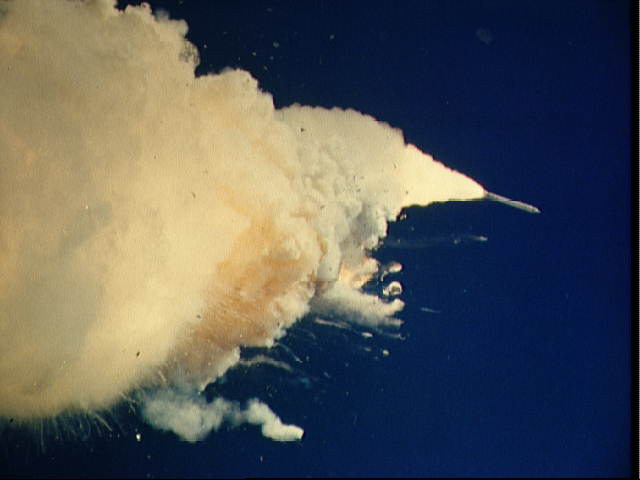
At the same time, the right SRB rotated about the forward attach strut, and struck the intertank structure. Smith may also have been responding to onboard indications of main engine performance or to falling pressures in the external fuel tank.Īt T+73.124 seconds, the aft dome of the liquid hydrogen tank failed, producing a propulsive force that pushed the hydrogen tank into the liquid oxygen tank in the forward part of the external tank. The last statement captured by the crew cabin recorder came just half a second after this acceleration, when Pilot Michael J.

Later analysis of telemetry data showed a sudden lateral acceleration to the right at T+72.525 seconds, which may have been felt by the crew. His response, "Roger, go at throttle up", was the last communication from Challenger on the air-to-ground loop.Īt around T+72 seconds, the right SRB apparently pulled away from the aft strut attaching it to the external tank. At T+68, the CAPCOM informed the crew – "Challenger, go at throttle up", and Commander Francis R. The pressure in the tank began to drop, and Challenger 's onboard computers began to pivot the nozzles of the SSMEs to counter the now-unbalanced thrust between the two SRBs.Īt this stage, the situation still seemed normal both to the astronauts and to flight controllers. As the mission clock passed up through T+64 seconds, the plume suddenly changed shape, showing that it had burned a hole in the liquid hydrogen tank in Challenger 's ET, causing the tank to leak. Internal pressure in the right SRB began to drop because of the rapidly enlarging hole in the failed joint, and at T+60 seconds there was visual evidence of flame coming through the joint and impinging on the external tank (ET). Within a second, the plume became well defined and intense. Īt around T+58 seconds, cameras noted the creation of a plume on the aft attachment strut on the right-hand SRB, as ignited gas began to force itself through a rapidly growing hole in the field joint. The pitch and yaw commanded by the shuttle's computers in order to counter this wind caused the solid fuel plug to become dislodged from the field joint on the right SRB.

However, at around T+36 seconds and an altitude of just over 3,000 m (9,800 ft), Challenger experienced the strongest wind shear ever felt during a Space Shuttle launch. However, sometime at around T+2 seconds, a piece of solid fuel from inside the booster moved inside the joint and provided a temporary seal against the blow-by, allowing the launch to proceed normally for around forty seconds. Almost immediately, cameras recording the launch registered the presence of smoke at the field joint next to the attachment strut on the right-hand SRB, indicating the failure of the O-rings that were supposed to seal the joint against the "blow-by" of hot gases from the boosters. Her three main engines were ignited at T-6.6 seconds, and at T-0 the solid rocket boosters were ignited, lifting the shuttle stack off launchpad LC-39B at Kennedy Space Center. Challenger begins to disintegrate.įollowing several days of lengthy delays, Challenger finally lifted off at 16:38:00 UTC on January 28, 1986. Cameras capture the plume of flame on Challenger 's right-hand Solid rocket booster (SRB). Summary timeline Space Shuttle Challenger lifts off on her final mission.

The seven-member crew was killed when the crew compartment hit the Atlantic Ocean at 333 km/h (207 mph), after two and a half minutes of freefall. The mission ended in disaster following the destruction of Challenger 73 seconds after lift-off, because of the failure of an O-ring seals on Challenger 's right solid rocket booster, which led to the rapid disintegration of the Space Shuttle stack from overwhelming aerodynamic pressures. The mission used Space Shuttle Challenger, which lifted off from launch pad 39B (LC-39B) on January 28, 1986, from Kennedy Space Center, Florida. STS-51-L was the twenty-fifth flight in the American Space Shuttle program, and marked the first time a civilian had flown aboard the Space Shuttle. The STS-51-L mission started with the ignition of Challenger's main engines until the remote destruction of the two Solid rocket boosters (SRBs), and includes a transcript of crew conversations from the cockpit voice recorder on board the orbiter. Detailed timeline of Space Shuttle Challenger mission


 0 kommentar(er)
0 kommentar(er)
